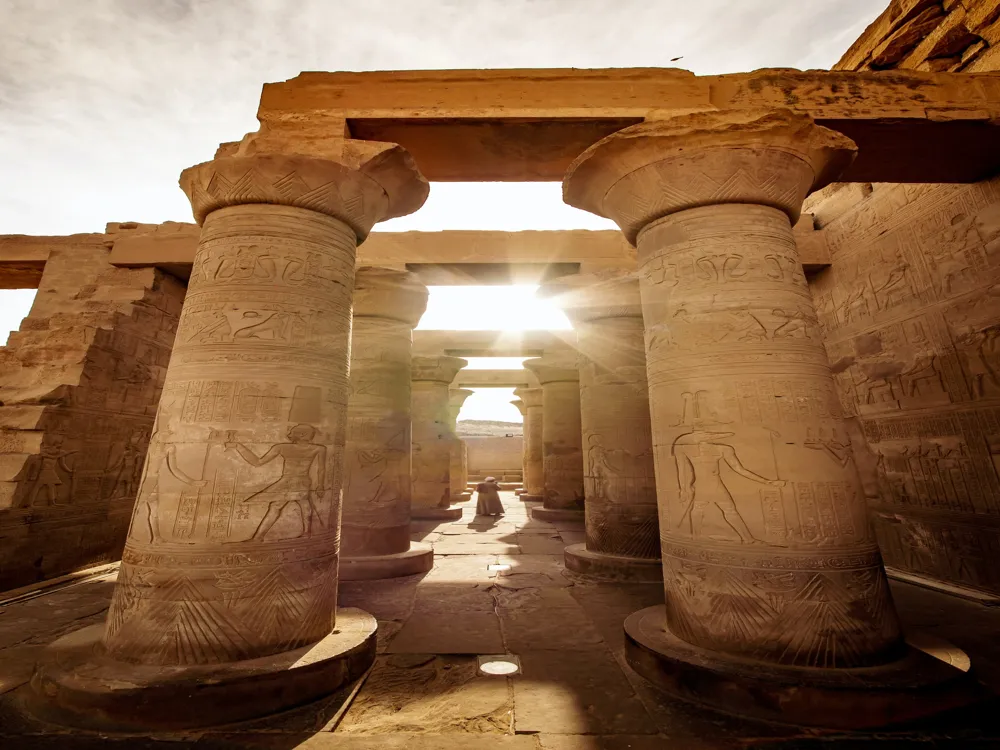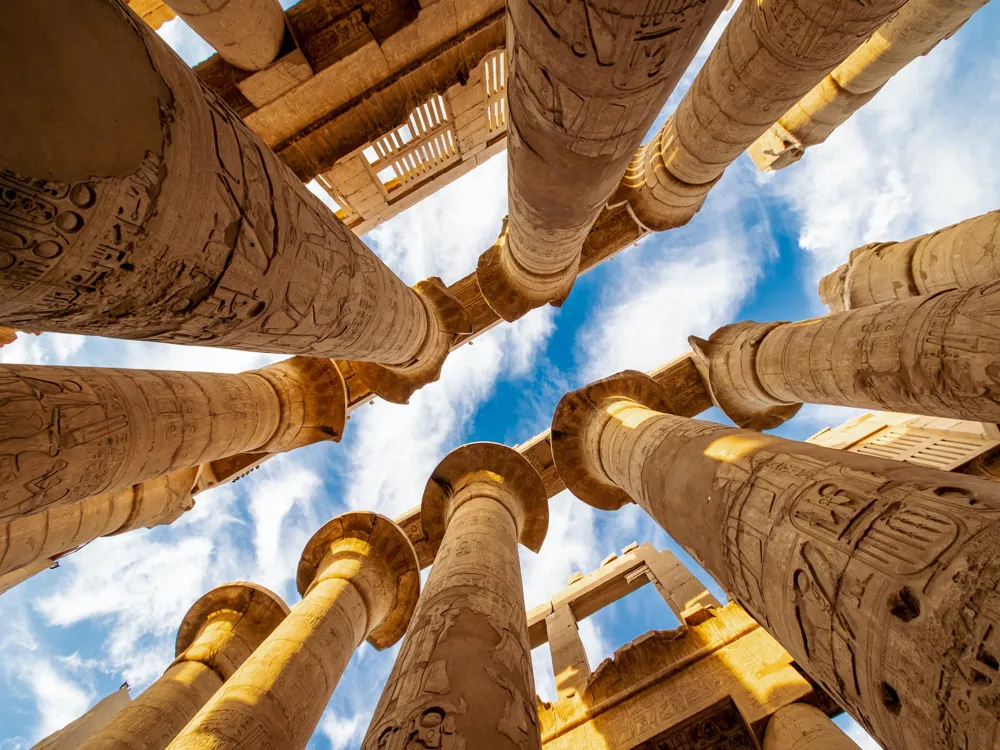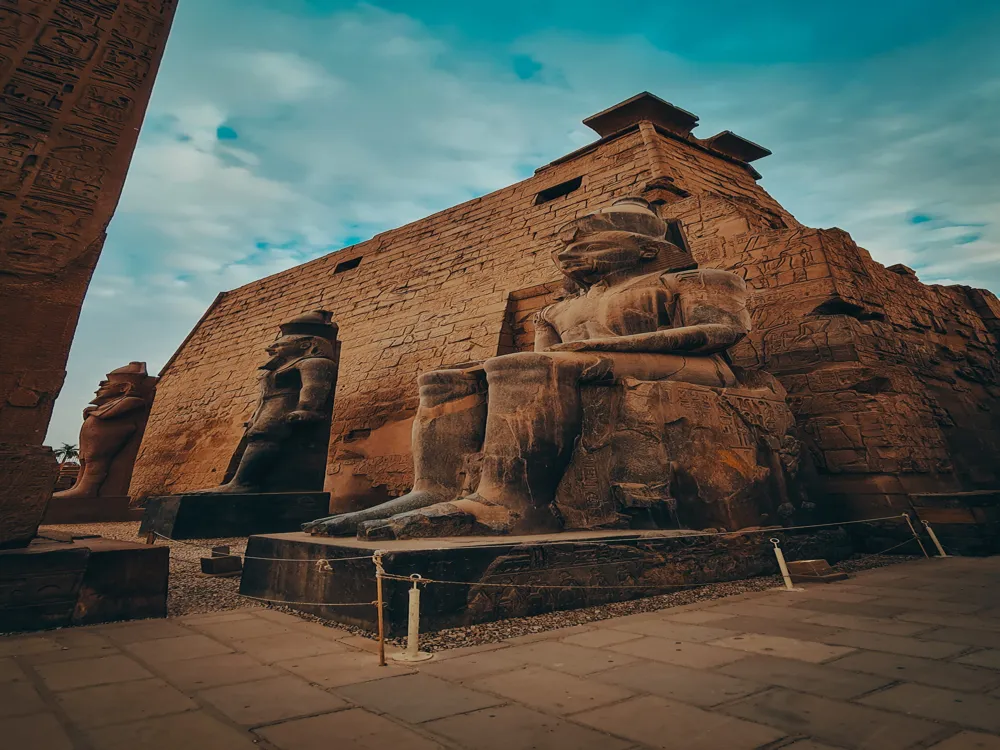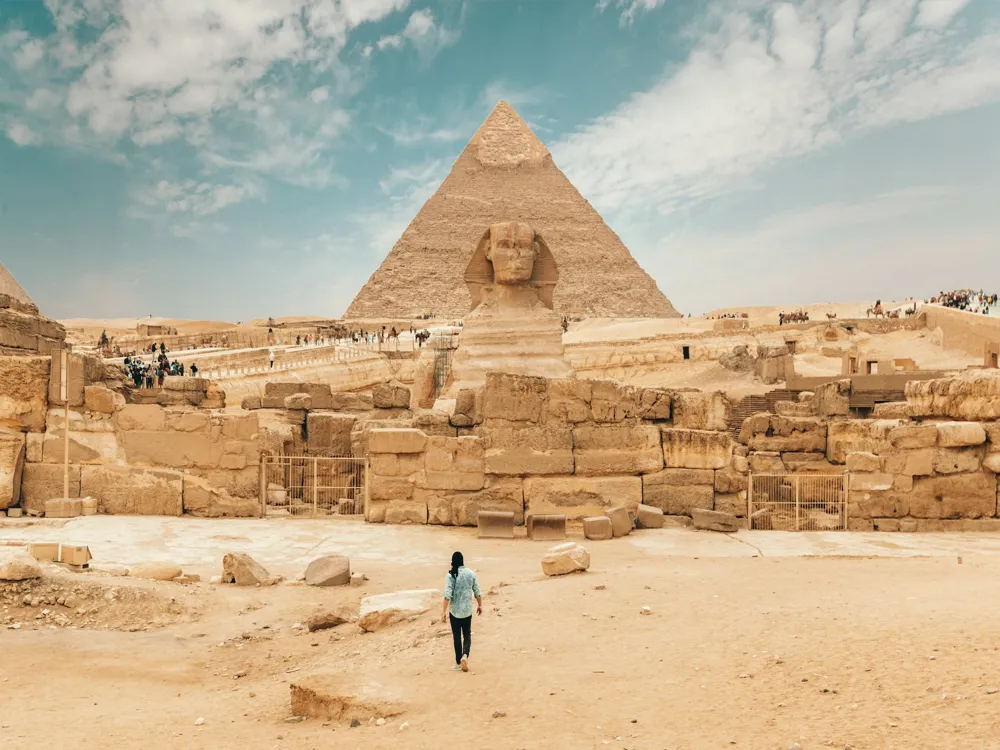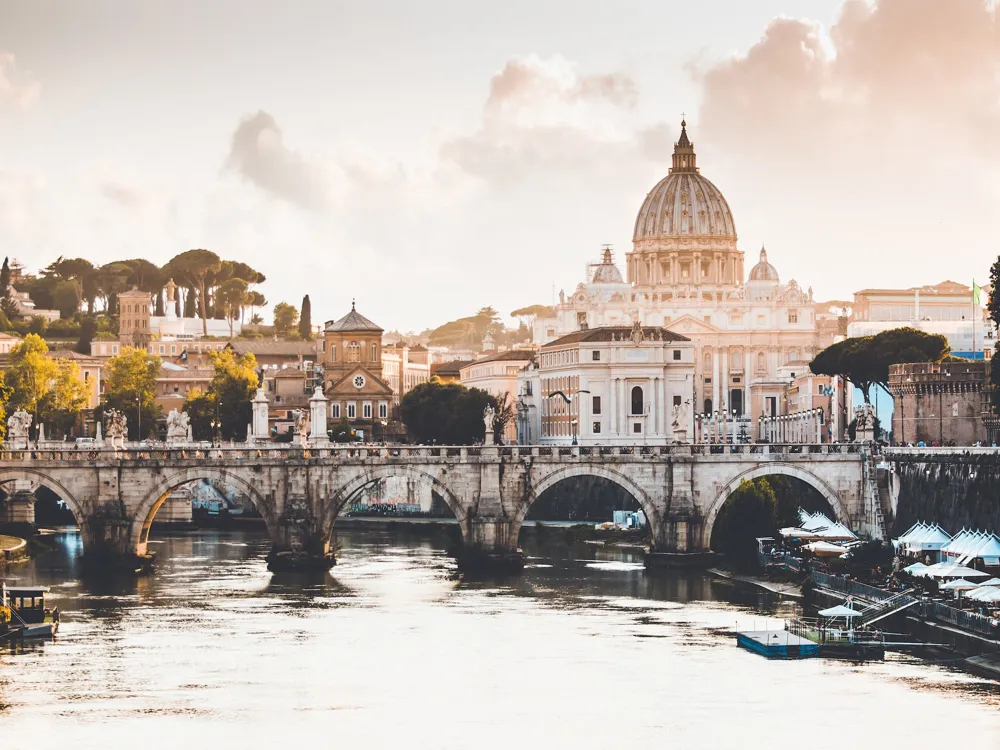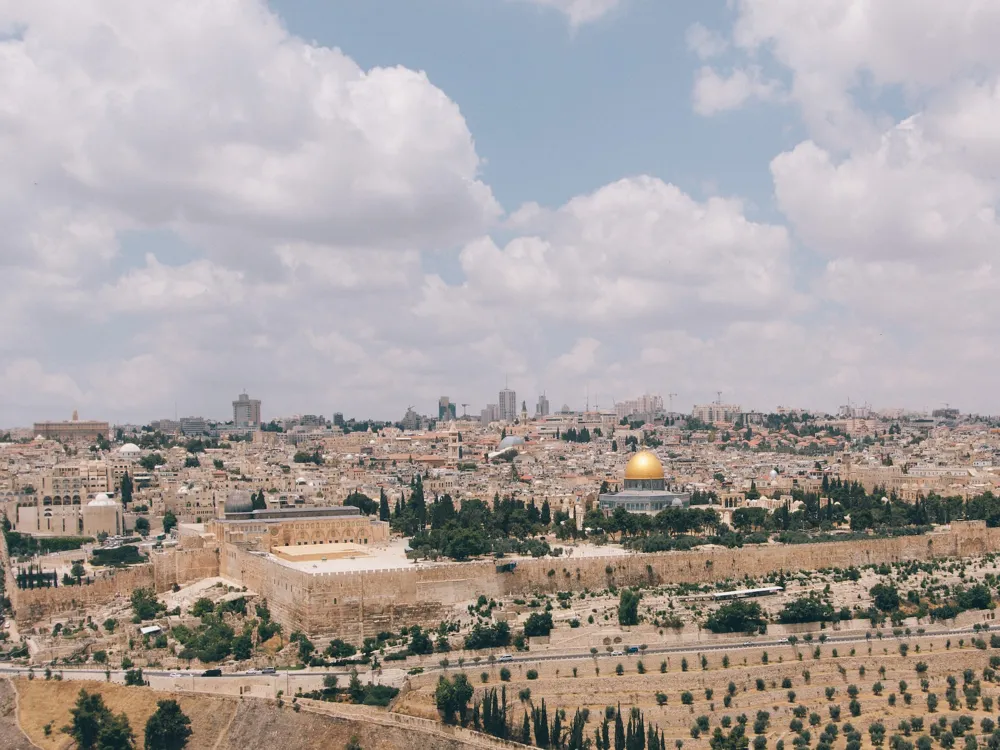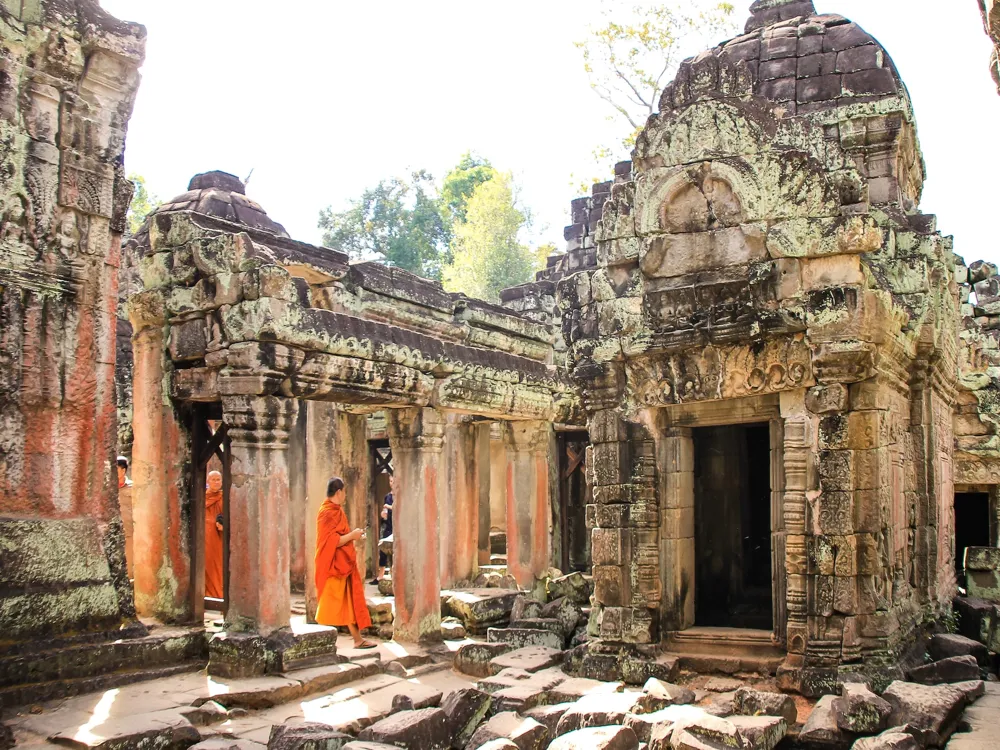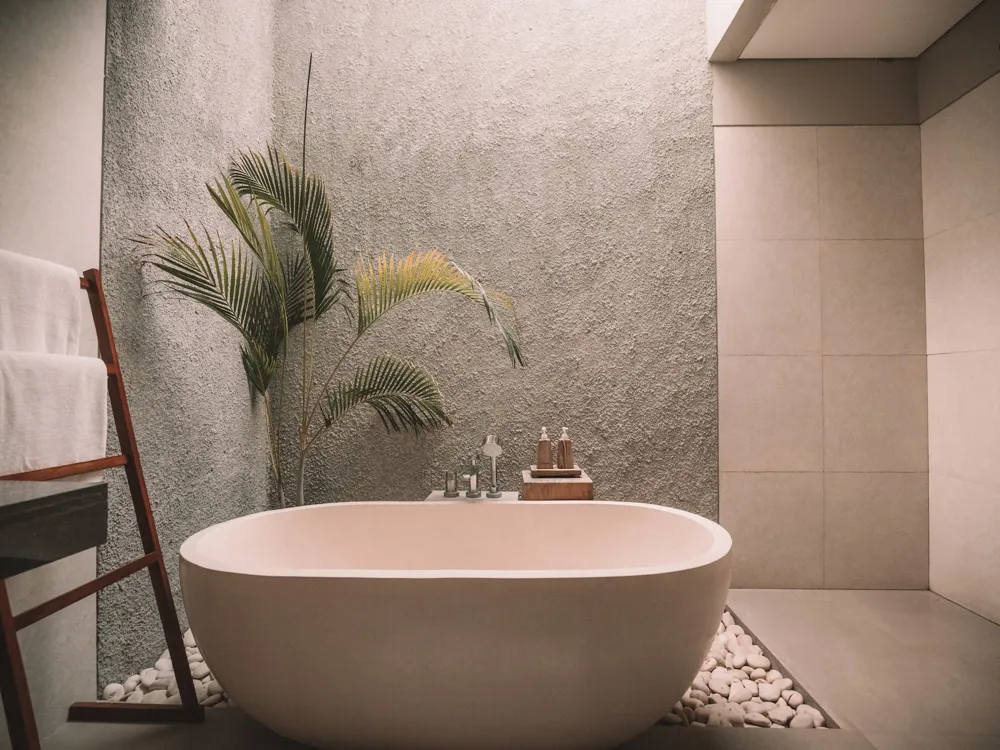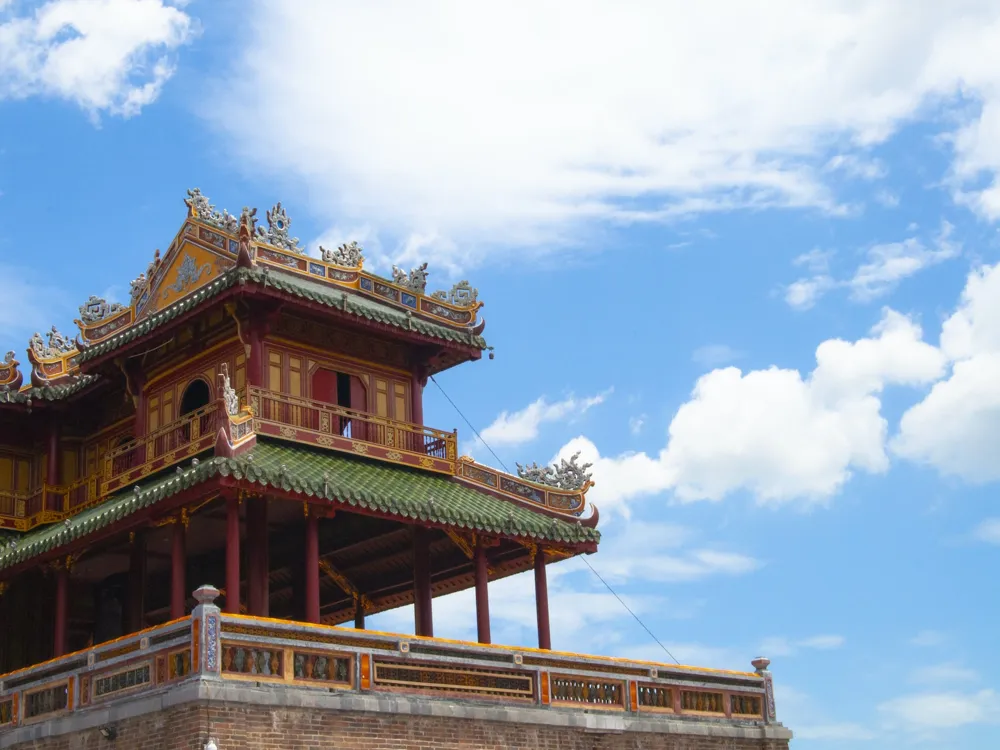Plan Your Travel To Luxor
Places To Visit In Luxor
Medinet Habu
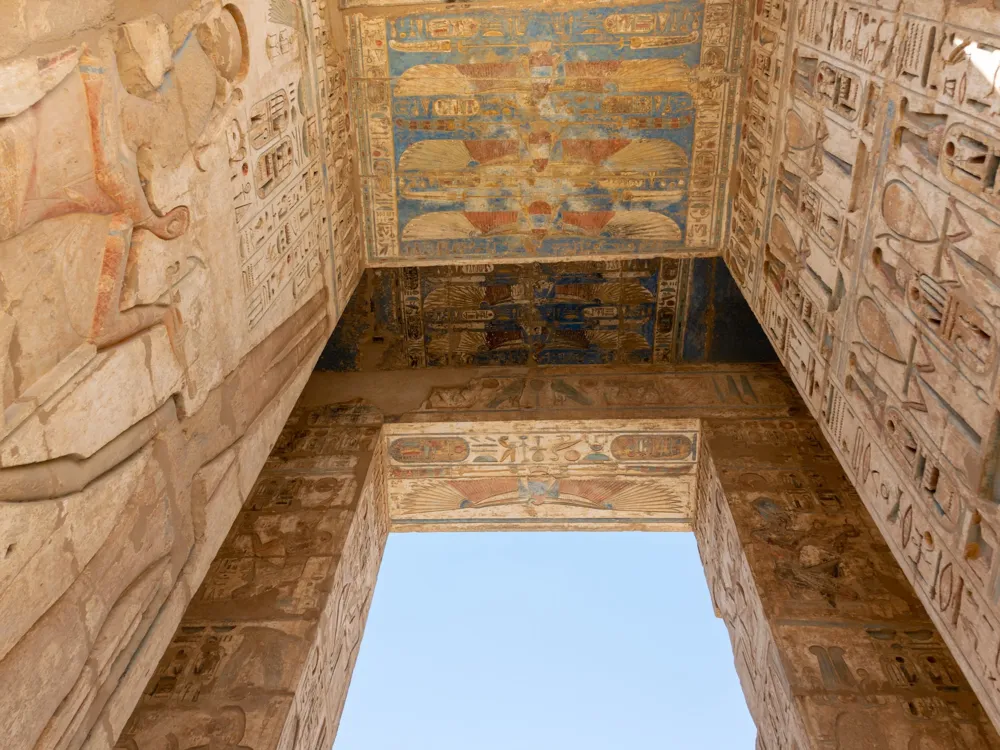
Medinet Habu is an archaeological site located near the foot of the Theban Hills on the West Bank of the Nile. It contains several historical monuments but is famous for the Mortuary Temple of Ramses III. It is the second-largest surviving temple in Egypt. It has very well preserved art and architecture and is intricately carved with real stories depicting the reign of Rameses III.
The entrance is through the Syrian gate which is the second-largest pylon in Egypt. Immediately to the South are chapels dedicated to Amenirdis I, Shepenupet II and Nitiqret. The courtyard is lined with massive statues of Rameses III. The rear end of the site has the remains of the workers’ mud houses. There is also a small temple dedicated to the god Amun on the site which was built by Queen Hatshepsut.
Read More
Temple of Seti I
The Temple of Seti I is a memorial temple of the Nineteenth Dynasty Pharaoh Seti I. It is located near the town of Qurna, a few kilometres from the Nile. The reliefs carved on the walls of this temple are the finest surviving images from the Old Kingdom. It also includes a royal palace and a chapel for Ramses I. Climb the roof for a breathtaking view of Luxor.
Work on this temple began during the end of Seti I’s reign and was completed by his son Ramses II. While much of the eastern part of the complex is now buried under the town of Qurna, enough of the temple remains intact to give you an idea of its scale and opulence. Two engraved stelae at the site depict visits to the temple by Seti I and Ramses II. At the entrance portico of the temple, nine of the ten remaining engraved pillars can be viewed. Many rooms and sanctuaries can be accessed through the Hypostyle Hall. In the reign of Seti I and Ramses I, significant events were held into the Royal chambers.
Read More
Ramesseum
The Ramesseum is a mortuary temple dedicated to Ramses II. It is located in the Theban necropolis on the West Bank of the Nile. It took 20 years for the temple to be completed, and the magnificence of that shows in the remnants of the statues of Ramses II. The most prominent of these is the fallen colossal statue of Ramses II which once stood over 19 m high.
The walls are inscribed with scenes from Ramses II’s life, with particular importance given to the Battle of Kadesh. In addition, a 48-column hypostyle hall, a sanctuary, internal facades of pylons, and intricate wall paintings of Ramses II’s wife, children and mother all help give you an idea of the magnificence of this temple.
Read More
Tomb of Nefertari
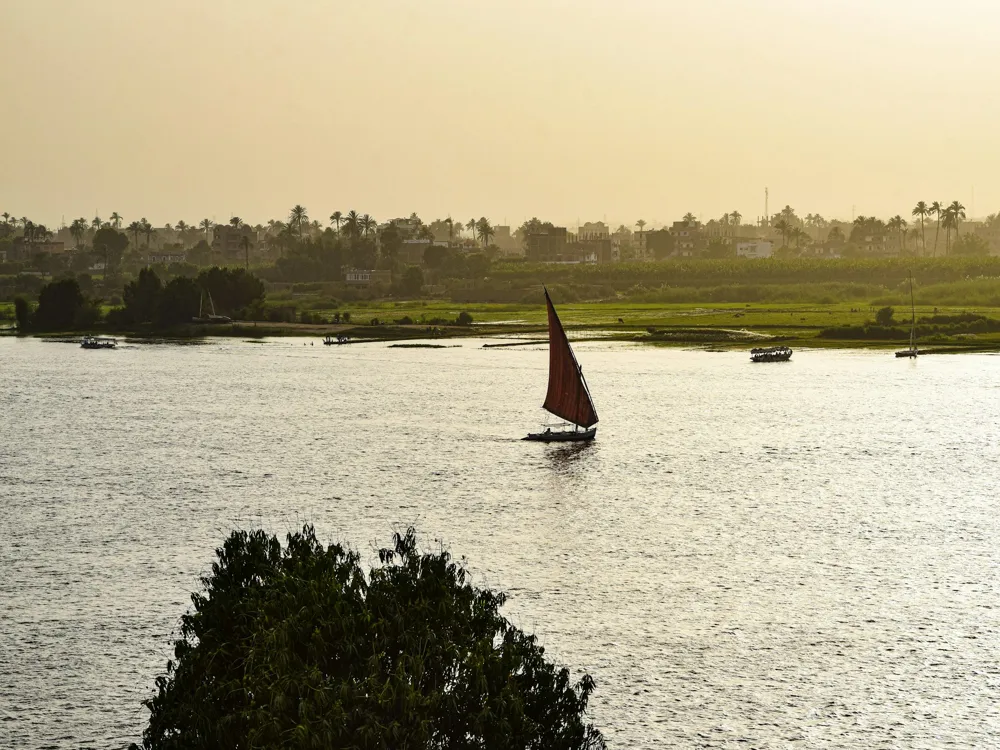
The Tomb of Queen Nefertari is located in the Egyptian Valley of Queens in Luxor. Nefertari was the most cherished companion to Rameses II and has one of the most extensive surviving tombs, especially for a Queen. The walls of the tomb are filled with vivid images from mythology and Nefertari, depicting her life, personality and journey to heaven.
The ceiling is painted a deep blue to mimic the night sky and has golden five-pointed stars. The paintings within the tomb are the best surviving documentation of an Ancient Egyptian’s journey to the afterlife, and the other mythological images help ascertain the roles of many gods and goddesses. It is best to visit in the early mornings when the crowds are less. You can reach the Valley of Kings by taxi or ferry across the Nile, and you may even hike to it.
Read More
Tomb of Ramses III
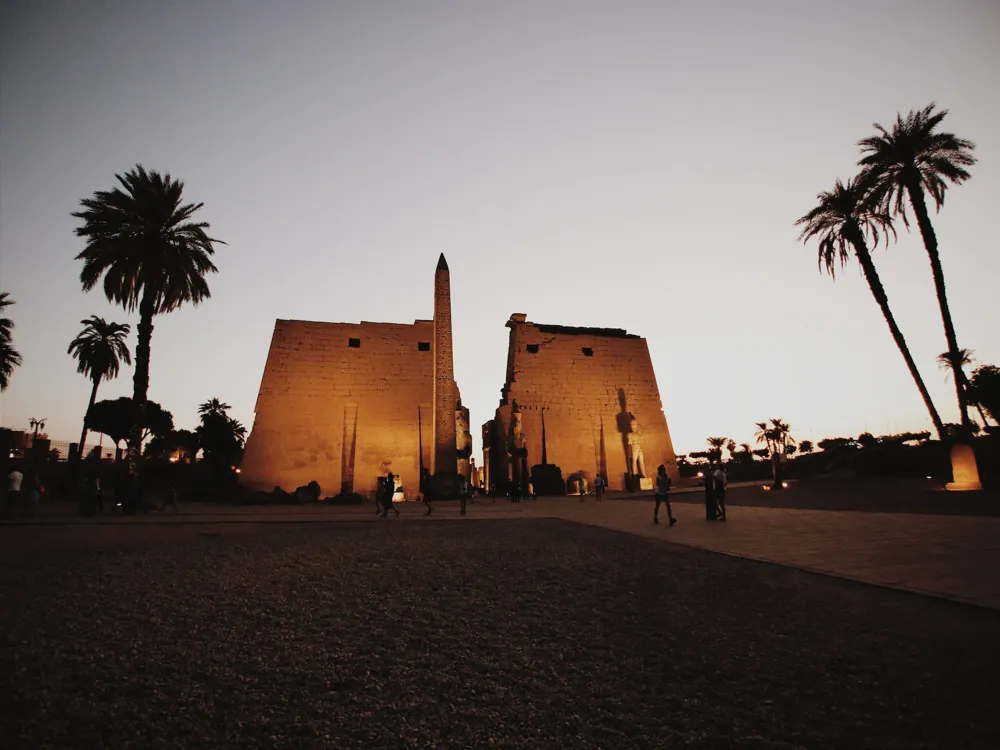
The Tomb of Ramses III is located in the Valley of Kings on the Western Bank of the Nile. It is one of the longest tombs in the Valley at 125 metres. It is exceptionally well preserved, and the detailed engravings on the tomb's walls are still very vivid. However, what sets this tomb apart is the evidence of foreign trade that was buried with Ramses III.
Detailed pottery and depictions of royals and armour of the Aegeans can be found in the side rooms. There is also a depiction of two blind musicians, which gives the tomb its alternative name, ‘the tomb of the Harpers.’ The tomb was initially built by Sethnakht, who abandoned work on it when construction hit the shaft of an adjacent tomb. Work resumed under Ramses III, and the workers shifted the tomb's axis to the West. The side hall is filled with grand pillars and engravings of scenes from the Book of Gates.
Read More
Tomb of Ramses VI
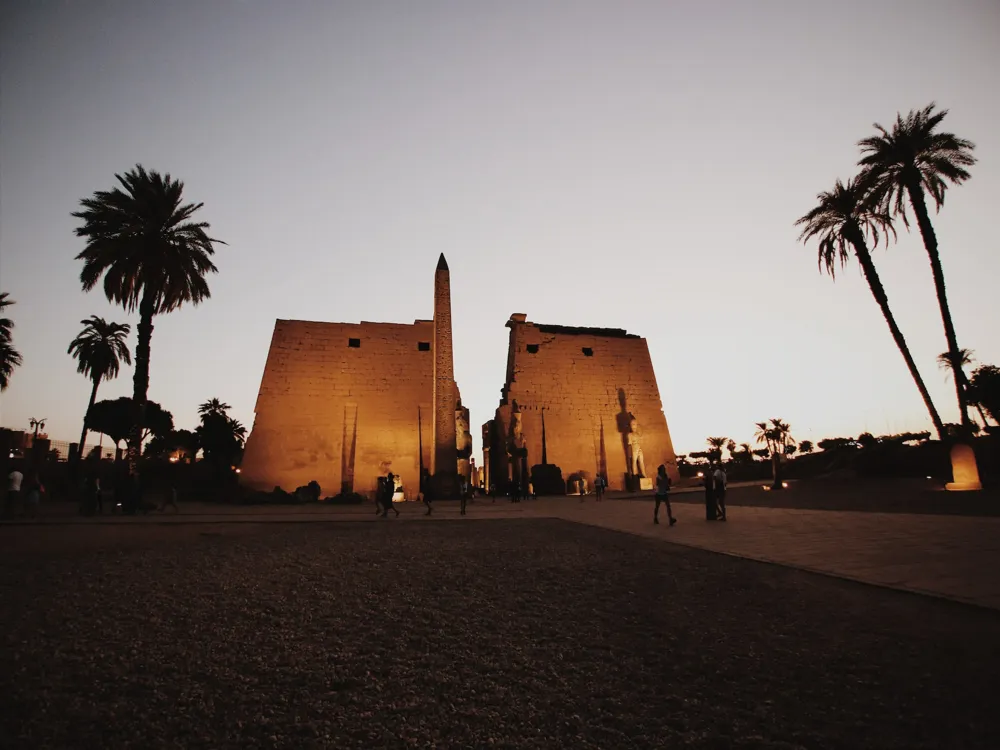
The Tomb of Ramses VI is one of the most spectacular tombs lcoated in the Valley of Kings. It was initially built by Ramses V but was enlarged by his uncle, Ramses VI whose burial it was eventually used for. The ceilings are all painted a deep blue and decorated with astronomical motifs to represent the night sky but the most striking visual remains the ceiling of the burial room.
The Sky Goddess Nut can be seen swallowing the sun, in a metaphor for the sunset and the sunrise. It is also meant to represent the endless cycle of rebirth of the Pharaohs. The tomb's walls are engraved with funerary texts to help the Pharoah transition into the afterlife. The Valley of Kings can be reached by taxi or bus and can even be hiked to.
Read More
Tomb of Tutankhamun
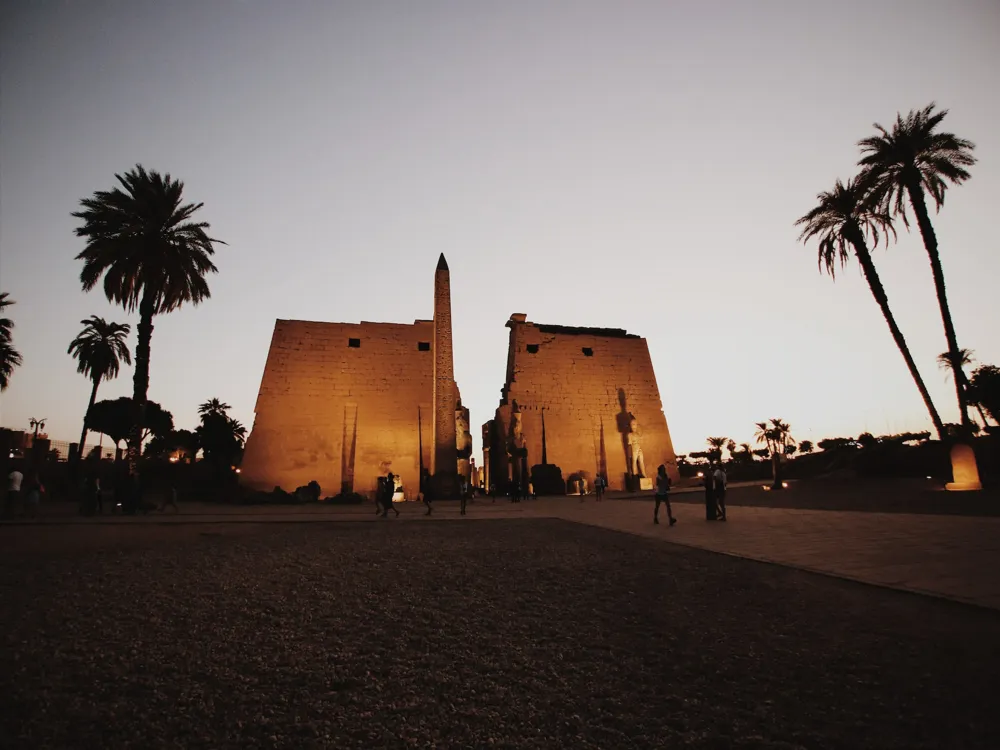
The Tomb of Tutankhamun is the burial place of Tutankhamun, a Pharaoh of the Eighteenth Dynasty of Ancient Egypt. It is located in the Valley of Kings on the Western Bank of the Nile. It contains a stone sarcophagus which has three coffins nested inside each other. The final coffin is made of pure gold and within it lies the mummy of Pharoah Tut which has been preserved for 3000 years.
It is the only largely intact tomb uncovered from the Valley of Kings, where Egyptian Pharaohs were laid to rest for nearly 500 years. Most of the treasures inside his tomb have been transported to museums worldwide, but the tomb remains. The tomb's walls are richly decorated, depicting scenes from mythology and Tutankhamun’s ascension to heaven. It is best visited in the early morning to avoid crowds. The Valley of Kings can be reached by taxi or bus and can even be hiked to. Tutankhamun was crowned Pharoah at 9 in 1332 BCE and worked to restore the Ancient Egyptian religion.
Read More
Tombs of the Nobles
Located opposite the Ramesseum in Luxor are more than 400 tombs belonging to nobles from the 6th dynasty to the Greco-Roman period. What sets these graves apart is that while the royalty had guides to heaven engraved on their tomb walls, the nobles often preferred detailed representations of their daily lives. As a result, they offer valuable insight into life at the time.
The tombs that are open to the public are divided into groups and must be visited separately. The groups are the Tombs of Khonsu, Userhet and Benia; the Tombs of Menna, Nakht and Amenenope; the Tombs of Ramose, Userhet and Khaemhet; Tombs of Sennofer and Rekhmire; and the Tombs of Neferronpet, Dhutmosi and Nefersekheru. Each of the tombs is unique and offers a different perspective on Egyptian life. The lack of a map makes navigation difficult so we recommend hiring a guide.
Read More
Luxor Travel Packages
View All Travel Packages Luxor
Nearby Places Luxor
Browse Package Collections
Browse Hotel Collections






